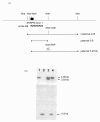Practice guidelines for the molecular analysis of Prader-Willi and Angelman syndromes
- PMID: 20459762
- PMCID: PMC2877670
- DOI: 10.1186/1471-2350-11-70
Practice guidelines for the molecular analysis of Prader-Willi and Angelman syndromes
Abstract
Background: Prader-Willi syndrome (PWS) and Angelman syndrome (AS) are clinically distinct neurodevelopmental genetic disorders that map to 15q11-q13. The primary phenotypes are attributable to loss of expression of imprinted genes within this region which can arise by means of a number of mechanisms. The most sensitive single approach to diagnosing both PWS and AS is to study methylation patterns within 15q11-q13; however many techniques exist for this purpose. Given the diversity of techniques available, there is a need for consensus testing and reporting guidelines.
Methods: Testing and reporting guidelines have been drawn up and agreed in accordance with the procedures of the UK Clinical Molecular Genetics Society and the European Molecular Genetics Quality Network.
Results: A practical set of molecular genetic testing and reporting guidelines has been developed for these two disorders. In addition, advice is given on appropriate reporting policies, including advice on test sensitivity and recurrence risks. In considering test sensitivity, the possibility of differential diagnoses is discussed.
Conclusion: An agreed set of practice guidelines has been developed for the diagnostic molecular genetic testing of PWS and AS.
Figures



References
-
- Williams CA, Beaudet AL, Clayton-Smith J, Knoll JH, Kyllerman M, Laan LA, Magenis RE, Moncla A, Schinzel AA, Summers JA, Wagstaff J. Angelman syndrome 2005: updated consensus for diagnostic criteria. Am J Med Genet A. 2006;140:413–418. - PubMed
MeSH terms
Substances
LinkOut - more resources
Full Text Sources
Medical
Research Materials

